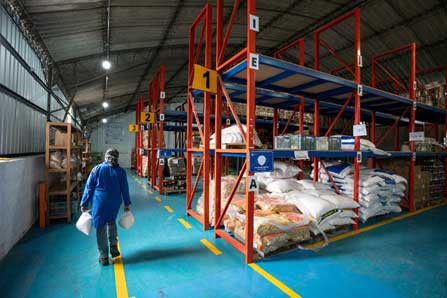Food Banks are Early Warning Systems for Emerging Food Crises, but also a Key Solution — Global Issues
CHICAGO, USA, May 27 (IPS) – For months, the specter of a global hunger crisis has been looming. The war in Ukraine is a compounding factor, blocking key value chains for food and fertilizer just as the world reckons with the impacts of the COVID-19 pandemic on global hunger.
Add the pervasive effects of climate change to the mix, and the result is what the United Nations is calling a “perfect storm” that risks one-fifth of the global population – as many as 1.7 billion people – falling into poverty and hunger.
This number feels so large that it is almost inconceivable, never mind possible to accept. And of course, the mounting global food crisis will not affect everyone equally.
Recent feedback from food bank leaders all over the world already echoes the reality ahead. Because food banks, especially across emerging and developing markets, are the first (or sometimes only) port-of-call for those facing hunger, they offer a window into understanding the full extent of the coming food crisis: an early warning system of the strains on our food systems.

The Global Food Banking Network works with member food banks in 44 countries, and many of them in Africa, Asia, and Latin America are already reporting that higher food prices are contributing to an increase in demand for emergency food assistance.
For example, a partner food bank in Ecuador, Banco de Alimentos Quito, has reported a 50 percent increase in demand for services, while another partner, India Food Banking Network, has warned the number of people requesting food has doubled recently.
If more is not done – and done quickly – these numbers will be just the tip of the iceberg. Tragically, as while demand at many food banks is increasing, supplies donated to food banks are often diminishing.
These food banks in Ecuador and India—and others across the Network—are reporting decreases in product donations of up to 50 percent. Banco de Alimentos Quito and Banco de Alimentos Honduras, both of which regularly recover fresh produce directly from farmers to distribute to people facing hunger, are flagging that planting schedules have been thrown off because farmers cannot get key inputs.
In short, less produce is available to donate because of the rise in need and smaller, less reliable yields.

With the recent World Economic Forum in Davos and the G7 Summit, there are already calls on governments and business leaders to invest more in hunger relief and food aid. This is a crucial first step, but investment will only be as effective as the implementation mechanisms in place to deliver them.
This is also where food banks can step in effectively and immediately. Because food banks address community food needs even in less precarious times, they are already well positioned to respond to crises by scaling up in times of scarcity and distributing food when conventional supply chains are undermined.
The COVID-19 pandemic is already a case in point, with global food banks serving 40 million people in 2020, a 132 percent increase from the prior year. And because food banks are community-based and community-led, they can understand and adapt to local needs quite quickly, acting as frontline responders when a crisis hits.
Responses to the global hunger crisis must include recognition for the critical role food banks play. They will step up and play a crucial role in meeting the sharp increase in demand for food relief in the coming months.
However, if the global community steps forward and supports the value of these assets further, food banks’ impact can become outsized. And an outsized response is exactly what this coming crisis will require.
IPS UN Bureau
Follow @IPSNewsUNBureau
Follow IPS News UN Bureau on Instagram
© Inter Press Service (2022) — All Rights ReservedOriginal source: Inter Press Service
Check out our Latest News and Follow us at Facebook
Original Source







